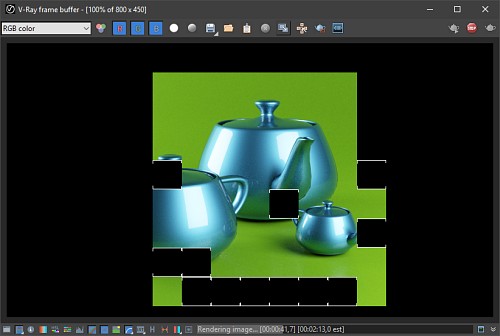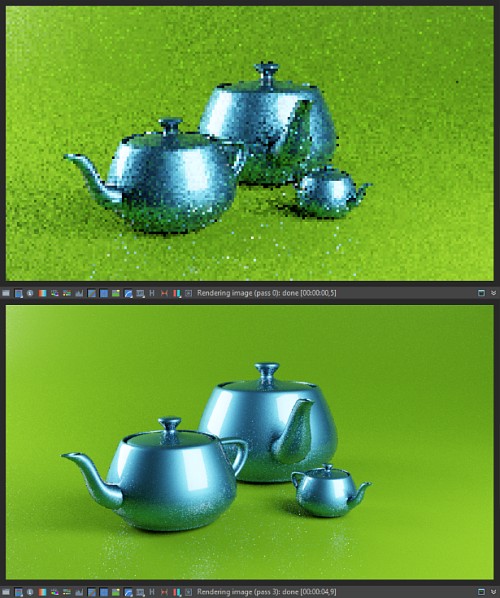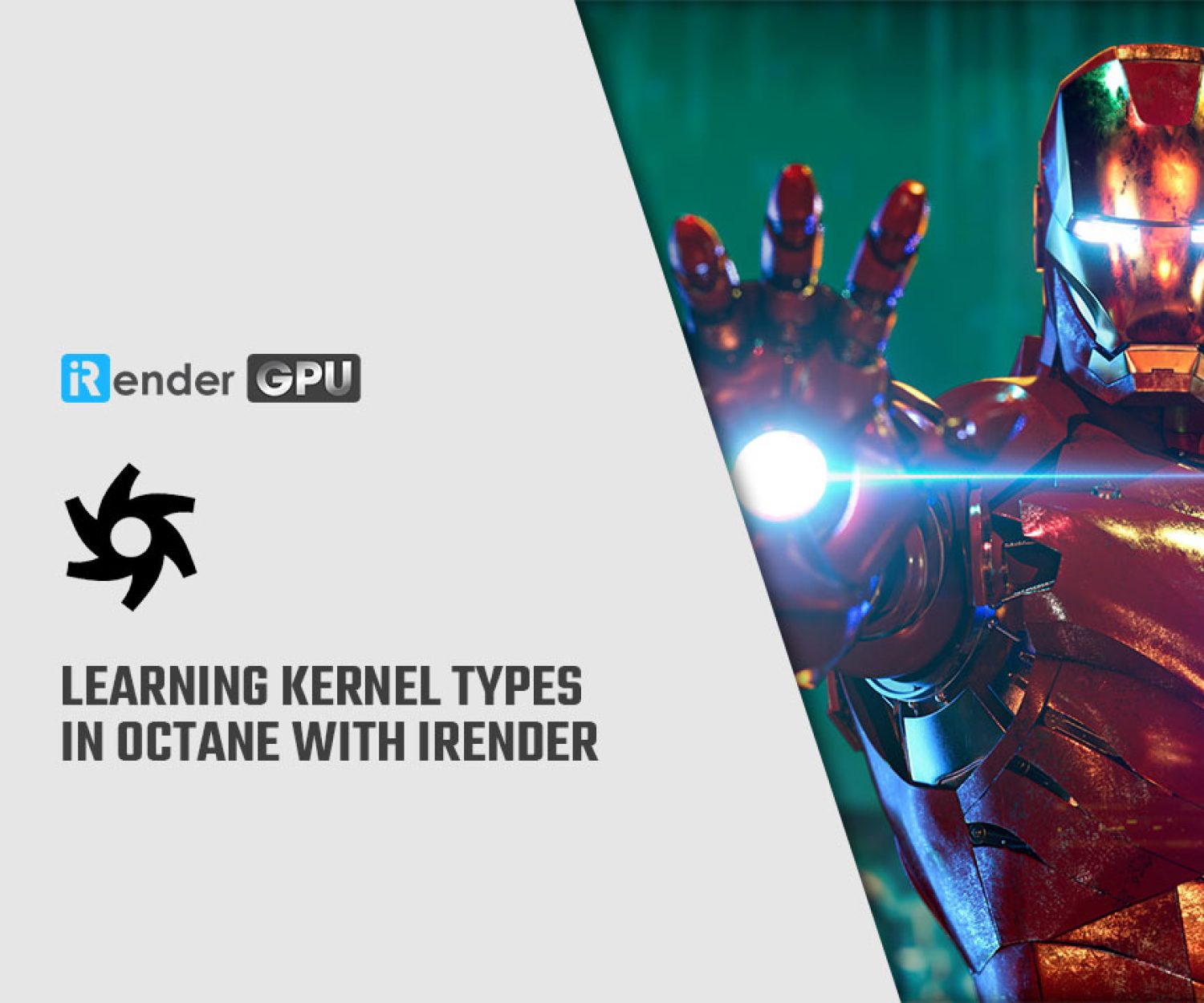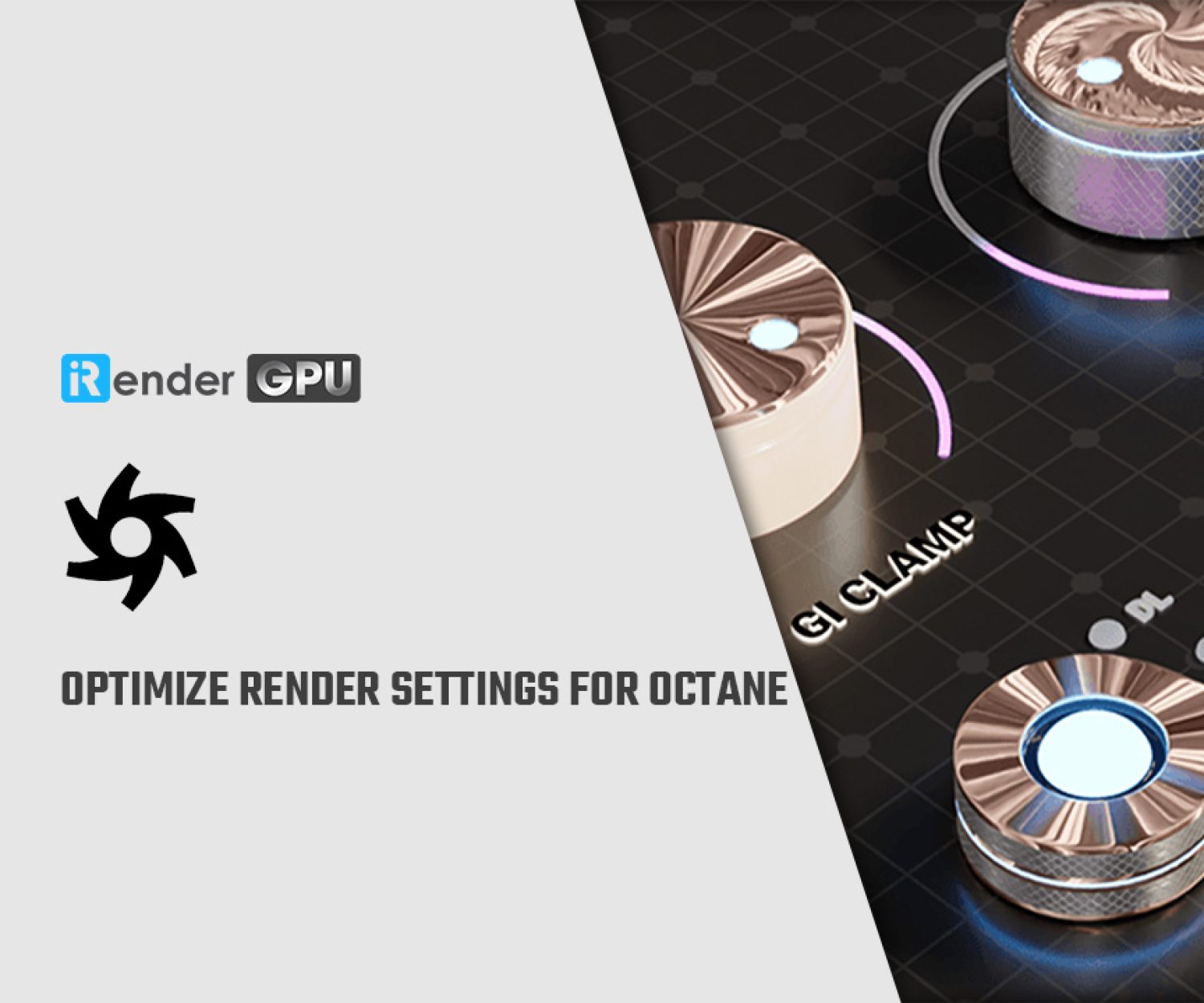Bucket vs progressive rendering: which one is better for your final renders?
In some rendering engines, there are two methods which can help you render: bucket rendering and progressive rendering. Both of them have their advantages and disadvantages when processing the images. In this article, let’s compare Bucket vs progressive rendering: which one is better for your final renders?
1. Bucket rendering
Bucket rendering, known as tiled rendering or chunking, is the technique where the graphical scene is divided into a number of portions (buckets) that are rendered independently. The number of buckets are in accordance with the number of cores of your CPU or the number of GPUs you have in your system.
Pros
-
-
-
- The smaller size of the buckets, the smaller memory footprints and memory required during rendering. You only need to load the objects or texture tiles which are used in the bucket rendering, not all of the image.
- It also helps you process multiple buckets in parallel better.
- You have final quality in each finished bucket.
-
-
Cons
-
-
-
- Since not all of the buckets will render at the same time, you will need to wait until they finish completely.
- You don’t have a general look of how the image might be, so it’s hard if you want to take an usable image just for showing or checking if everything is rendered correctly.
- Sometimes the render times might be slow down because of one single stuck bucket
- You see that one image includes many buckets, and each bucket will be rendered independently. However, the computational calculation will increase because the CPU (or GPU) needs to calculate for the overlap regions many times.
-
-
2. Progressive rendering
Progressive rendering is the technique where the entire image is rendered progressively. The image at the beginning will be very noisy with lower resolution. And as the rendering progresses, it add more samples to each pixel to refine the final quality.
Pros
It’s completely opposite to bucket rendering. The drawbacks of the bucket will be the advantages of progressive.
-
-
-
- You will have a general look on how the image will look like.
- You can change materials, assets, objects or effects in the scene if the rendering update is not like what you want.
- You don’t need it to finish completely to get an usable image. You can stop the render whenever you think it’s enough. It’s helpful when you have to show your clients some looks before coming to the final render.
-
-
Cons
The lack of RAM or VRAM will be the biggest challenge for progressive rendering
-
-
-
- Because your render engine needs to keep all the scene data all the time so that it can render the whole image at once, it’s not ideal for memory efficiency.
- If you use GPU, VRAM could be a problem as it’s not many available like RAM.
- Long time for an image or one area of the image to reach final quality. You can use mouse tracking to help it know where to render first.
-
-
3. Bucket vs progressive rendering: which one is better for your final renders?
When you look at the drawbacks and benefits of these two types of rendering, you could slowly imagine which one is better. Bucket rendering in general will be good for final rendering, where you need it to be fast and more memory efficient. While progressive is better for preview and lookdev where you can have a general view of what it will look like, and if you will need any other modification.
However, kindly be noted that some render engines support both methods, some don’t. For example, V-Ray, Redshift, Corona, etc. support both, but Octane doesn’t. So to use one of them, or even both of them while rendering will depend on your render engine.
4. Speed up your render with iRender
iRender is a Professional GPU-Acceleration Cloud Rendering Service provider in HPC optimization for rendering tasks, CGI, VFX with over 30.000 customers and being appreciated in many global rankings (e.g. CGDirector, Lumion Official, Radarrender, InspirationTuts CAD, VFXrendering, All3DP). We are proud that we are one of the few render farms that support all software and all versions. Users will remotely connect to our server, install their software only one time and easily do any intensive tasks like using their local computers.
There are a variety of servers from single- GPU 1x RTX 3090 to Multi-GPU 2/4/6/8 x RTX 3090, you can choose one server that is suitable for your demand and your software to get started. Besides, we offer clients the powerful processor AMD Ryzen Threadripper Pro 3955WX @ 3.90GHz, RAM 256 GB and 2 TB SSD to load your scene quickly.
Register an account today for a 20% bonus for new users to experience our service. Or contact us via WhatsApp: (+84) 916 806 116 for advice and support.
Happy rendering!
Source: graphics.stanford.edu, racoon-artworks.de
Related Posts
The latest creative news from Redshift Cloud Rendering, Octane Cloud Rendering, Cinema 4D Cloud Rendering , V-Ray Cloud Rendering. , Houdini Cloud Rendering.







